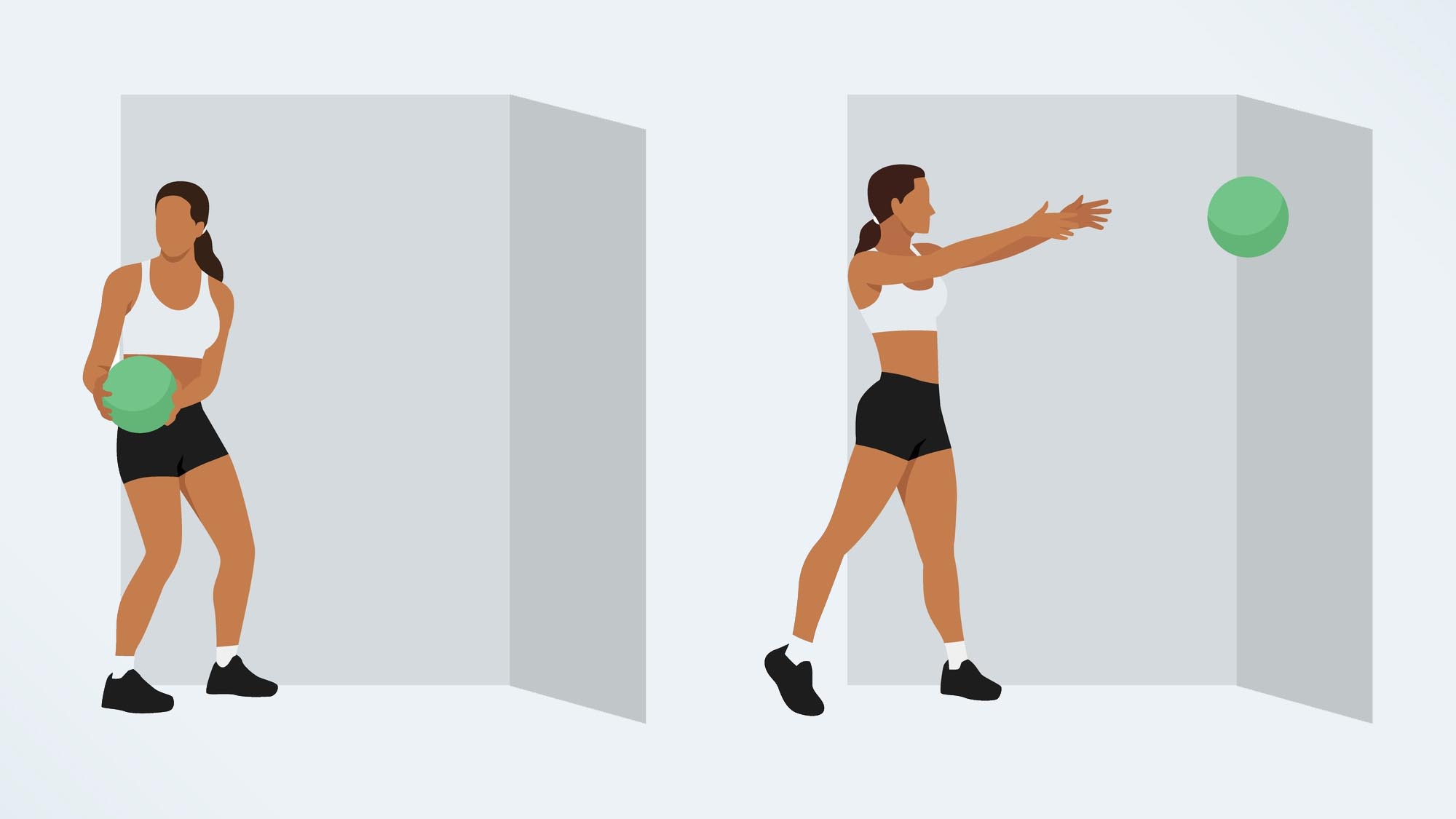What is a medicine ball, and how do I use one in my workouts?
Here are the best exercises to try

The medicine ball’s long history as a piece of weight training equipment persists today because of its versatility, and its relative safety as compared to other types of weights. And while the materials used to make a medicine ball have evolved over the years, the basic structure and function remains largely the same.
A medicine ball is a weighted ball, traditionally made from leather but now more often made from vinyl, plastic, rubber, or other synthetic materials to increase grip and reduce cost. Medicine balls come in a variety of sizes and weights, and they are versatile enough to work a wide variety of muscles.
What are the advantages of a medicine ball?
Since a medicine ball is soft — relative to other weight-lifting equipment like barbells, dumbbells, and kettlebells — it can be thrown safely to the floor, into walls, or to a partner. That means the user can focus on the primary motion of the exercise.
For example, a kettlebell can also be used for explosive power movements, but the user must then return the kettlebell to its original position in a controlled manner. This isn’t always necessary with a medicine ball, so there is a lower risk of injury or strain.
Medicine balls are also extremely versatile. They can be used for a wide variety of exercises, and you can work just about every part of your body with one. They take up far less space than traditional weights, and since they come in variations of one-pound increments, you can get the medicine ball that perfectly suits your needs.
How do I use a medicine ball?
There are countless ways to use a medicine ball, but as always, it’s best to get guidance from a professional before using one. Most gyms and athletic facilities have professional trainers on hand who can give you guidance on using a medicine ball properly so you can get the most out of it and reduce your risk of injury.
Squats

One of the easiest ways to get started with a medicine ball is to use it while performing squats. Simply hold the medicine ball in both hands at chest height and perform a squat like you normally would. If you’ve never done a squat before, here’s a quick starter guide:
Get instant access to breaking news, the hottest reviews, great deals and helpful tips.
Adding a medicine ball to this simple exercise adds weight, thereby increasing the load that works your core and thigh muscles.
- Place your feet hip-width apart
- Keep your back straight
- Lower your upper body while hinging at your hips
- Keep your knees centered over your feet as you lower your body
- Return to the starting position in a controlled manner
Adding a medicine ball to this simple exercise adds weight, thereby increasing the load that works your core and thigh muscles.
Overhead slams

For building high-twitch muscle response, you can start with overhead slams. This exercise will work your core muscles, as well as your lats. Core muscles help stabilize your body, so strengthening these muscles is key to any workout routine.
To perform an overhead slam, start by positioning the medicine ball behind your head, and supporting it with both hands. Then, swing the medicine ball over your head and forward, then down toward the ground, in one fluid motion. Think of creating the arc of a rainbow to ensure proper movement. Be sure to bend at your waist as you thrust forward.
Then, release the medicine ball and slam it into the ground as hard as you can. It is important to maintain stability throughout your core during the duration of this high-intensity motion. Repeat the process several times.
Rotational slams

There are other “slamming” exercises you can do with the medicine ball that are similar to the overhead slams described above. You can, for example, work lateral muscles by slamming the medicine ball into a wall. This is called a rotational wall slam.
To perform a rotational wall slam, start by standing perpendicular to a wall with your feet planted at shoulder width, and the medicine ball positioned in front of your stomach. In one fluid motion, twist your body while pivoting your foot furthest away from the wall, and slam the ball into the wall. A heavy medicine ball with a soft exterior is best for this exercise in order to reduce bounce back off the wall.
As is the case with any slam exercise, control is key. You want to ensure you move with fluid, forceful movements and engage your core muscles as you complete the movement.
Core rotations

Not all exercises performed with the medicine ball are designed to develop those fast-twitch muscles. You can also develop balance and stability with certain medicine ball exercises. For example, you can use a medicine ball for core rotations.
To perform a core rotation, start by standing with your legs hip-width apart. Then raise one foot off the ground so you are standing on one leg. Hold the medicine ball in front of your body, just below chest height. Then, in a controlled motion, rotate your core from left to right. Maintain your shoulder straightness to ensure you’re rotating your entire core. Repeat this motion several times, then rest for a short time. Then, raise your other leg and repeat the process.
What weight medicine ball should I use?
Medicine balls vary in price, but a general rule is they will cost about $2 per pound. To figure out how heavy of a medicine ball you need, it’s best to start small and work your way up from there. If you’re unsure, you may want to visit a local fitness center that’s likely to have several medicine ball weights on hand for you to try.
Remember that some medicine balls are meant to absorb shock, while others may bounce more. It’s best to think carefully about what kind of exercises you intend to do with the medicine ball before purchasing one. For example, if you intend to do slam exercises, buy a medicine ball with a softer structure that will limit bounce. If you want to use your medicine ball for stability exercises and rotations, you may want to choose a firmer medicine ball made with grippier material.
More from Tom's Guide
- I walked 8,000 steps with the Apple Watch Series 9 and the Fitbit Inspire 3 — and one was way more accurate
- How to lose weight and get in shape by walking
- The best running watches we've tested

Dan Cavallari is the former technical editor for VeloNews Magazine, who currently reviews electric bikes, bike lights, and other bike accessories for Tom's Guide. In addition to VeloNews, his work has appeared in Triathlete Magazine, Rouleur Magazine, CyclingTips.com, Road Bike Action, Mountain Bike Action, CycleVolta.com, Tomsguide.com, and much more. Dan also hosts two podcasts on his site, Slow Guy on the Fast Ride: One is about cycling and other outdoor activities, while the other looks at mental health issues. Most recently, Dan also covered the 2022 Tour de France. Dan lives outside of Denver, Colorado with his family.
